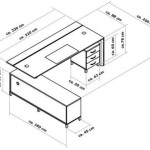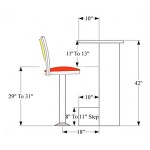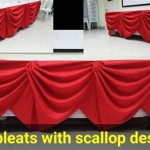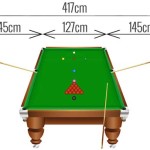How Much Does It Cost To Get A Pool Table Recovered?
The cost of recovering a pool table is not a fixed figure; rather, it is a variable expense influenced by a multitude of factors. Understanding these factors is crucial for anyone considering this type of maintenance, allowing for accurate budgeting and the anticipation of potential costs. These factors can range from the type of felt chosen to the complexity of the table's construction and the geographic location of the service.
This article explores the various elements that contribute to the overall expense of pool table recovering, providing a comprehensive overview of what one can expect to pay and why. By dissecting each component of the cost, this guide aims to equip pool table owners with the knowledge needed to make informed decisions regarding this essential aspect of pool table maintenance.
Felt Quality and Type as Cost Drivers
The felt, or cloth, used to cover a pool table is a primary determinant of the overall cost. The price of felt varies significantly based on its composition, durability, and brand. Typically, pool table felt is made from a blend of wool and nylon, with the proportion of each material impacting the cloth's performance and longevity.
Cheaper felts often contain a higher percentage of nylon, making them less expensive but also less durable. These felts tend to wear down faster, resulting in a less consistent playing surface and the need for more frequent replacements. In contrast, higher-quality felts incorporate a greater proportion of wool, providing a smoother, more consistent playing surface. These felts are more resistant to wear and tear, offering increased longevity and improved ball control. However, they also come with a higher price tag.
Beyond the basic wool-nylon blends, there are also specialized felts designed for professional or commercial use. These felts are often treated with special coatings to enhance their resistance to stains and spills, or woven with tighter weaves for increased durability. Championship Invitational felt, for example, is a popular choice for tournament-grade tables, renowned for its speed and precision. Simonis cloth is another premium option, celebrated for its tight weave and exceptional durability. These high-end felts can significantly increase the overall cost of recovering a pool table.
Furthermore, the color of the felt can sometimes influence the price. While standard colors like green or blue are typically priced similarly, more unique or custom colors may incur an additional charge due to their limited availability or the need for special ordering. Ultimately, the choice of felt should be based on a balance of budget and desired performance, considering the frequency of use and the level of play desired.
Pool Table Size and Complexity Influence Price
The size of the pool table directly correlates with the amount of felt required, and consequently, the cost of recovering it. Standard pool table sizes range from 7-foot to 9-foot tables, with larger tables requiring more material and labor. An 8-foot table, for instance, will necessitate more felt than a 7-foot table, resulting in a higher material cost.
Beyond the surface area, the complexity of the table's construction also plays a significant role in the labor costs associated with recovering. Some tables have intricate designs, such as ornate legs, complicated rail systems, or multiple slate pieces, making the recovering process more time-consuming and demanding. These features require a higher level of skill and precision from the technician, potentially increasing the labor charges.
Tables with slate beds that are not perfectly level may require shimming or other adjustments before the new felt is installed. This additional work can add to the overall cost. Similarly, tables with loose or damaged rails may need to be repaired before recovering, incurring further expenses. The presence of any unique features or challenges that complicate the recovering process will invariably increase the final price.
The number of slate pieces also influences the complexity. One-piece slate tables are generally easier to recover than three-piece slate tables. Three-piece slates require more precise leveling and seaming, adding to the technician's workload. Before obtaining a quote, it is crucial to accurately identify the pool table's size, construction, and any potential complications that may affect the recovering process's complexity.
Labor Costs and Geographic Location as Determinants
Labor costs represent a significant portion of the overall expense of recovering a pool table. These costs vary depending on the technician's experience, expertise, and the prevailing rates in the geographic area. Highly skilled and experienced technicians typically charge more for their services due to their ability to ensure a perfectly smooth and durable installation.
The geographic location also plays a crucial role in determining labor costs. In metropolitan areas with a higher cost of living, labor rates tend to be higher than in rural areas. The demand for pool table services in a particular region can also affect prices. Areas with a greater number of pool halls or recreational facilities may have a higher demand for recovering services, leading to increased competition and potentially higher prices.
Travel costs can also contribute to the expense. If the technician needs to travel a significant distance to reach the location, they may charge an additional fee to cover their transportation expenses. It is advisable to obtain quotes from multiple technicians in the area to compare prices and ensure a fair rate.
Furthermore, the inclusion of additional services, such as leveling the table, replacing the cushions, or repairing any damage, will increase the labor costs. It is essential to clarify the scope of work included in the quote and to ensure that all necessary repairs are addressed before the recovering process begins. A comprehensive quote should detail the specific services included, the materials used, and the estimated labor costs, providing a clear understanding of the total expense.
In some cases, technicians may offer package deals that include both the felt and the labor for a fixed price. These packages can sometimes be more cost-effective than purchasing the felt separately and hiring a technician independently. However, it is crucial to carefully evaluate the quality of the felt included in the package to ensure that it meets the required standards.
Obtaining multiple quotes allows for a comparison of pricing and the identification of any hidden fees or unexpected charges. It is also essential to verify the technician's qualifications and experience to ensure a professional and reliable service. Inquiring about their experience with similar pool tables and requesting references from previous clients can provide valuable insights into their expertise and workmanship.
The cost of pool table recovering is a complex calculation that depends on the interplay of several factors. By understanding the influence of felt quality, table complexity, labor rates, and geographic location, pool table owners can approach the recovering process with a realistic understanding of the potential costs and make informed decisions to ensure a satisfactory outcome.
The maintenance of a pool table extends beyond simply recovering the playing surface. Regular cleaning and proper storage can prolong the life of the felt and prevent damage. Keeping the table covered when not in use protects it from dust, spills, and sunlight, reducing the need for frequent recovering. Using a specialized brush to remove chalk dust and debris from the felt after each use also helps to maintain its smoothness and consistency.
Furthermore, the environment in which the pool table is located can impact the longevity of the felt. Excessive humidity or temperature fluctuations can cause the felt to warp or stretch, affecting its playability. Maintaining a stable and controlled environment helps to preserve the felt's integrity and reduces the likelihood of premature wear and tear. Avoid placing the pool table in direct sunlight or near sources of heat, as these can cause the felt to fade or become brittle.
Choosing the right type of cue stick and using it properly can also contribute to the longevity of the felt. Inferior or poorly maintained cue sticks can damage the felt, leading to tears or snags. Ensuring that the cue stick tip is properly shaped and using chalk sparingly helps to minimize the risk of damage. Avoiding excessive force when striking the ball also prevents unnecessary wear and tear on the felt.
Regular inspection of the pool table for any signs of damage, such as tears, stains, or loose seams, allows for early intervention and prevents minor issues from escalating into more significant problems. Addressing these issues promptly can save money in the long run by avoiding the need for more extensive repairs or premature recovering. Small tears can sometimes be repaired with specialized adhesives, while stains can be treated with appropriate cleaning solutions. However, it is essential to consult with a professional before attempting any repairs or cleaning, as improper techniques can cause further damage.
The frequency of pool table recovering depends on several factors, including the frequency of use, the quality of the felt, and the level of care provided. Tables that are used frequently or subjected to heavy play may require more frequent recovering than those that are used less often. High-quality felts generally last longer than cheaper felts, reducing the need for frequent replacements. Proper maintenance and care, as described above, can significantly extend the life of the felt and delay the need for recovering.
In most cases, a pool table that is used regularly should be recovered every one to three years. However, this is just a general guideline, and the actual frequency may vary depending on the specific circumstances. If the felt shows signs of significant wear and tear, such as tears, stains, or a noticeable loss of smoothness, it is likely time to consider recovering. Ignoring these signs can lead to diminished playing quality and potential damage to the underlying slate.
When recovering a pool table, it is essential to choose a qualified and experienced technician. A professional technician has the knowledge, skills, and tools necessary to ensure a properly smooth and durable installation. Attempting to recover a pool table without the necessary expertise can result in a poorly installed felt, which can affect playability and potentially damage the table. Investing in a professional recovering service ensures that the job is done correctly and prolongs the table's life.
In conclusion, the cost of recovering a pool table is influenced by a range of interconnected factors, from the quality of the felt and the complexity of the table to the labor costs and geographic location. A thorough understanding of these factors enables informed decision-making and effective budgeting, ultimately contributing to the long-term enjoyment and preservation of this classic recreational investment.

Pool Table For Recovering In Strachan Cloth Sometimes We Have Offers On Gcl Billiards

The 10 Best Pool Table Repair Services Near Me Free Quotes

How Much Does A Pool Table Cost E Schmidt Billiards American Made Tables

How Much Does A Pool Table Cost E Schmidt Billiards American Made Tables

Billiard Pool Table Recovery Business Commercial By Owner Craigslist

How Much Does It Cost To Refelt A Pool Table 2024 Data Angi Repair Felt Colors

2 795 3 495 Range Ina Pool Tables Plus

Pool Table Billiards From 1295 General For By Dealer Craigslist

Premium Pool Tables A Man His Cave

Championship Bg253gr 7 Ft Saturn Ii Billiard Cloth Pool Table Felt Green Com








